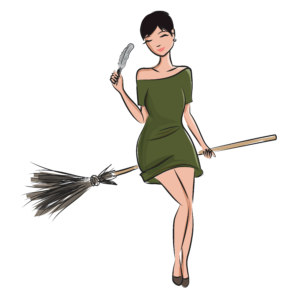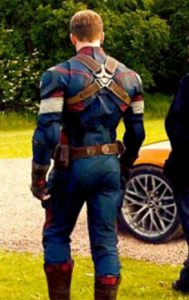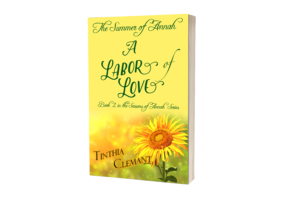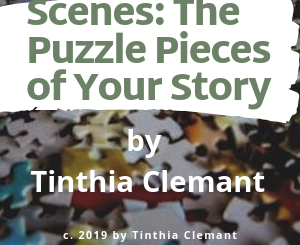GMC: Goal, Motivation, and Conflict — The ABCs of Writing by Tinthia Clemant
 Let’s welcome back monthly columnist, Tinthia Clemant as she shares with us “GMC: Goal, Motivation, and Conflict — The ABCs of Writing.” Enjoy!
Let’s welcome back monthly columnist, Tinthia Clemant as she shares with us “GMC: Goal, Motivation, and Conflict — The ABCs of Writing.” Enjoy!
***
GMC: Goal, Motivation, and Conflict
In 1996 Debra Dixon published her book, GMC: Goal, Motivation, and Conflict; The Building Blocks of Good Fiction, but even before Ms. Dixon brought together the pieces that make a novel worth reading, successful authors already knew the secret formula to writing compelling stories—Give your characters goals.
What is a character’s goal?
According to Dixon, a goal is a desired result; a purpose or an objective.
Goals come in a variety of shapes and sizes. For example a goal can be a character planning on destroying the Infinity Gauntlet (I put that in to see if you’re paying attention).
Goals versus Desires
Wanting something is a desire; working to obtain that something is the goal. For example, let’s return to Captain America. His wanting to avenge the destruction of half all living organisms on the planet is a desire, and a pretty strong one at that. Deciding to reverse Thanos’ original snap is Cap’s goal.
External and Internal Goals
Goals come in two flavors: External, which are tangible things that can be smelled, tasted, touched, etc; and internal goals, which are feelings. Many writing coaches claim that internal goals are one and the same as the character’s desires, but I disagree. A true goal comes with a plan while a desire is a want. Let’s say we have Mary who’s unhappy with her life. She wants to be happy. That’s her desire.
Her internal goal might be to find love because she believes the tingly giddiness she’ll feel when she’s in love is the same as true happiness. So, she devises a plan to find love. Maybe she joins a dating service or hangs around the local saloon. Maybe she believe sex and love go together and she decides to get laid, her external goal.
Internal and external goals are always joined at the hip. Mary’s quest for joy might bring her to the decision that she’ll find happiness by owning a diamond tennis bracelet. Obtaining the bracelet becomes Mary’s external goal. Her internal goal is the feeling she’s expecting when she owns the bracelet.
Remember: Desires are wants, and goals are plans to fulfill that want.
How do you incorporate a character’s goal into your story?
Once you’ve decided on your character’s goal, think about what she’ll do to achieve that goal. Nothing is too ridiculous during this brainstorming session. Get your ideas on paper and then cross out the outlandish ones, unless they fit with your character’s personality. Remember, to have a story where the character is believable we need to make sure the character acts consistently with her values.
This is a key point. Let’s get back to Mary and her bracelet. She’s a member of her local church, and, therefore, we can rule out having her knock an old lady down a flight of stairs so she can rob the old woman. Mary would never do that.
Once you have your list, remove any ideas that don’t fit the character, and arrange the rest into a timeline. This become your basic outline for your story. You’ll also have a character who is constantly moving forward, heading towards her ultimate goal while acting in line with her core values.
Mini-Goals
Feel free to give your character multiple mini-goals, but just make sure your mini-goals work towards the character’s primary goal, or you’ll find yourself wrestling with a book going in separate directions. Mary’s major goal of obtaining her tennis bracelet could involve her meeting Fred, a local jeweler.
Mini-goals of how she’ll go about getting Fred’s attention are perfectly fine because they bring Mary closer to her main goal of owning the bracelet. Having Mary take a course in Mandarin isn’t, unless Fred is Asian. If your character’s goal is the road map that will bring them their desire, mini-goals are the streets she’ll travel.
No goal?
New writers often ask: What if my story doesn’t call for my character to have a goal? My response: If you have a character who desires something, that desire will lead to a goal, but you have to do some digging.
Here are some questions I ask my characters to help determine their goals.
- If you had three wishes, what would they be (no wishing for a fourth wish)?
- What do you believe will bring you true joy?
- What steps are you willing to take to find that joy?
- What would it take to kick start your quest for that joy? (The response to this question becomes my inciting incident).
My next post in this series will address motivation, the force behind a character’s goal. Until then, get out there and give your character a goal. Your readers will thank you. Happy writing.
Blessed be :}
***
ABOUT THE AUTHOR
 Author of The Summer of Annah series, Tinthia Clemant lives in a secluded spot on the Concord River in Massachusetts. Her companions include a black Labrador/Coonhound named Harlee; Shadow, an elderly black cat who still rocks at catching mice that have wandered into the house; a few hundred wild Mallards; assorted turtles, songbirds, snakes; and hawks, two Great Blue herons, and an American bald eagle.
Author of The Summer of Annah series, Tinthia Clemant lives in a secluded spot on the Concord River in Massachusetts. Her companions include a black Labrador/Coonhound named Harlee; Shadow, an elderly black cat who still rocks at catching mice that have wandered into the house; a few hundred wild Mallards; assorted turtles, songbirds, snakes; and hawks, two Great Blue herons, and an American bald eagle.
Besides writing, she enjoys baking, gardening, reading (of course), painting and photography, laughing, and movies (the more explosions the better). Tinthia is an ice cream aficionado and insists that Ben and Jerry are the most perfect men ever created. She inherited my father’s temper and her mother’s view on life: It’s meant to be lived, embraced, savored, inhaled, and not given back until every last drop of wonder is claimed. If you visit Tinthia, make sure you bring a bottle of bourbon and, of course, ice cream. Her favorite flavor is Chunky Monkey.













Always a pleasure to write for Writer’s Fun Zone. Thank you.
Glad you’re here writing for us, Tinthia! You’re so welcome, and thank you!